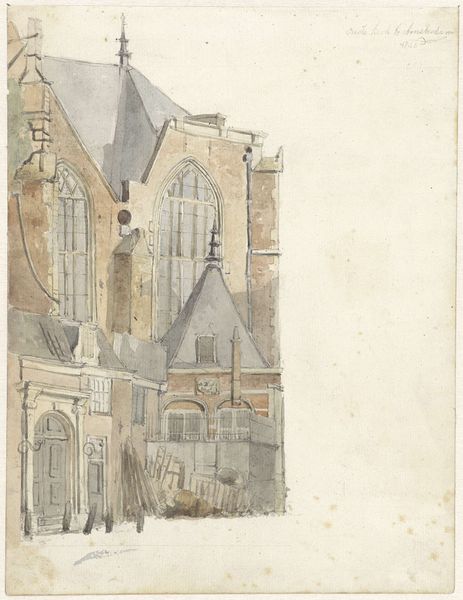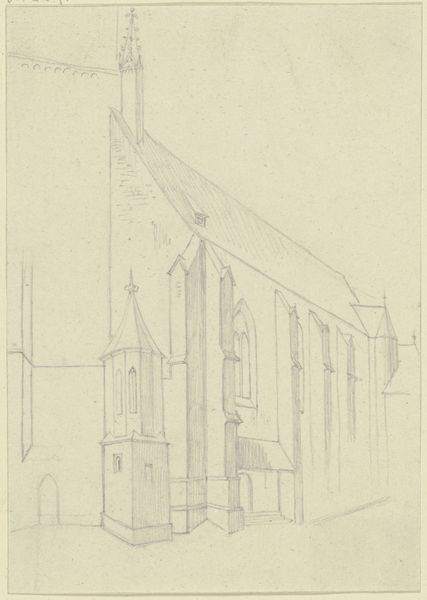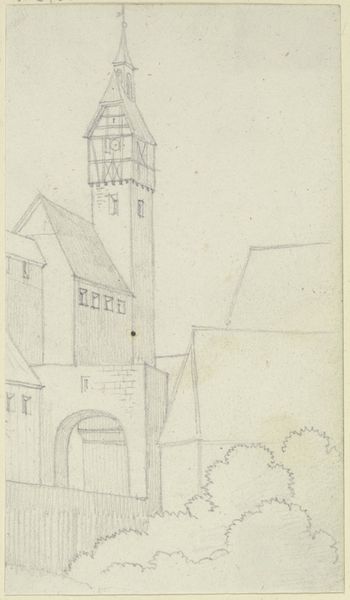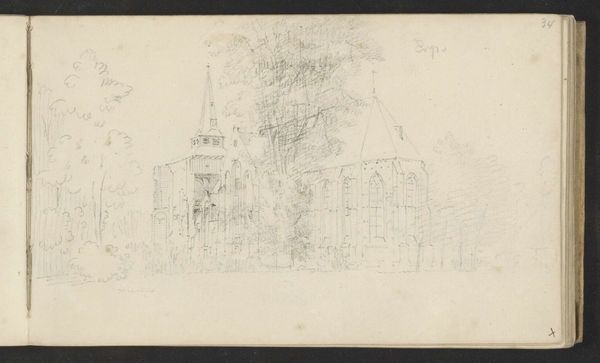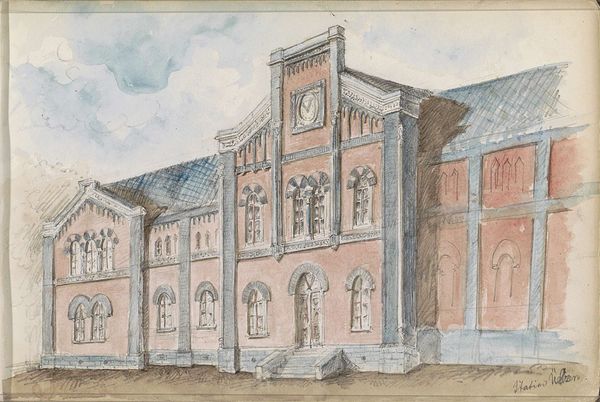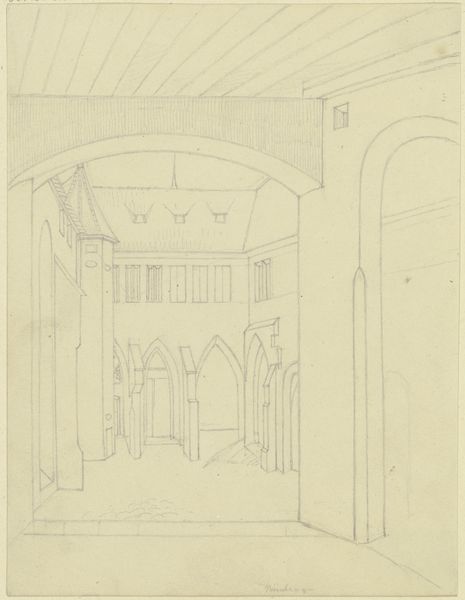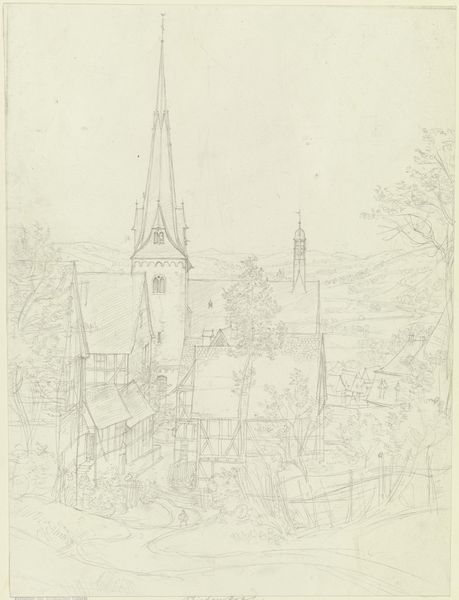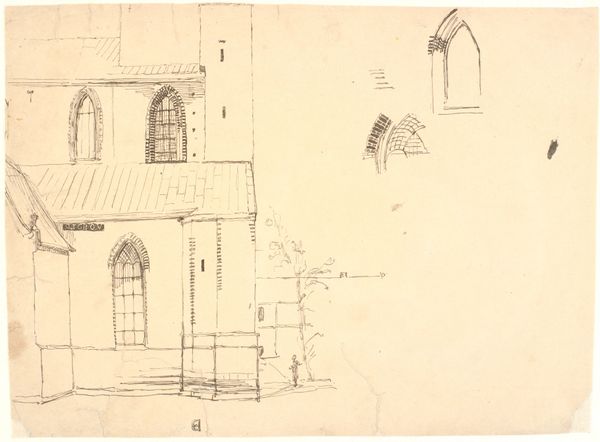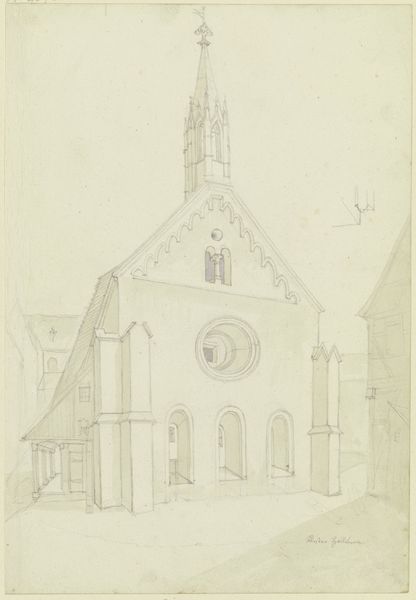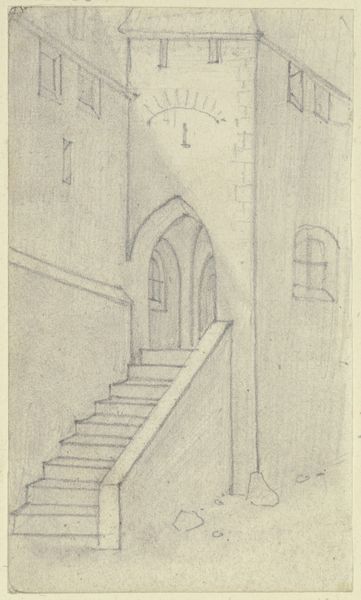
drawing, watercolor
#
drawing
#
landscape
#
watercolor
#
cityscape
#
realism
Copyright: Rijks Museum: Open Domain
Curator: This watercolor and drawing piece, titled "Gevel van de Westerkerk," was created between 1862 and 1867 by Isaac Gosschalk. Editor: There's a spectral quality to it, isn't there? Almost ghostly. The soft washes of color give the imposing architecture an ethereal, almost vulnerable feeling. Curator: It’s fascinating how Gosschalk used the medium to capture architectural detail. The muted palette directs our attention to the workmanship of the church's facade. It prompts us to consider the laborers, stonemasons, and other skilled individuals who participated in its construction. This piece presents a glimpse into the manufacturing processes of the past, reminding us of the intersection between artistic expression and societal infrastructure. Editor: Exactly. And given the historical context—the Netherlands in the mid-19th century—I wonder about the societal role of religious institutions like the Westerkerk. How did they impact Dutch identity, class structures, or even political discourse at the time? The sketch, while seemingly focused on architectural details, becomes a lens through which to examine larger societal dynamics. The absence of people also makes me wonder about issues of access and exclusion connected with this place of worship. Curator: Interesting point. When considering technique, look at the pencil lines under the watercolor; these decisions were likely dictated by constraints of the medium itself and prevailing notions regarding ‘finished’ versus ‘unfinished’ works. By leaving elements exposed, Gosschalk blurs lines between the sketch and finished artwork, subtly challenging conventional hierarchies within artistic practice. Editor: I appreciate how you are drawing connections between medium, artistic choice, and even implicit cultural hierarchies embedded within its presentation! This sketch definitely presents fertile ground for discussing issues surrounding identity, the social history of labor, and broader dynamics during that era. Curator: Indeed, and while we focus on such grand historical narratives, it is useful not to forget that, fundamentally, what we have before us is the result of physical acts of making, distribution, and then valuation of these materials. Editor: Ultimately, art helps us grapple with complex issues, promoting dialogue around subjects that still hold importance today.
Comments
No comments
Be the first to comment and join the conversation on the ultimate creative platform.
